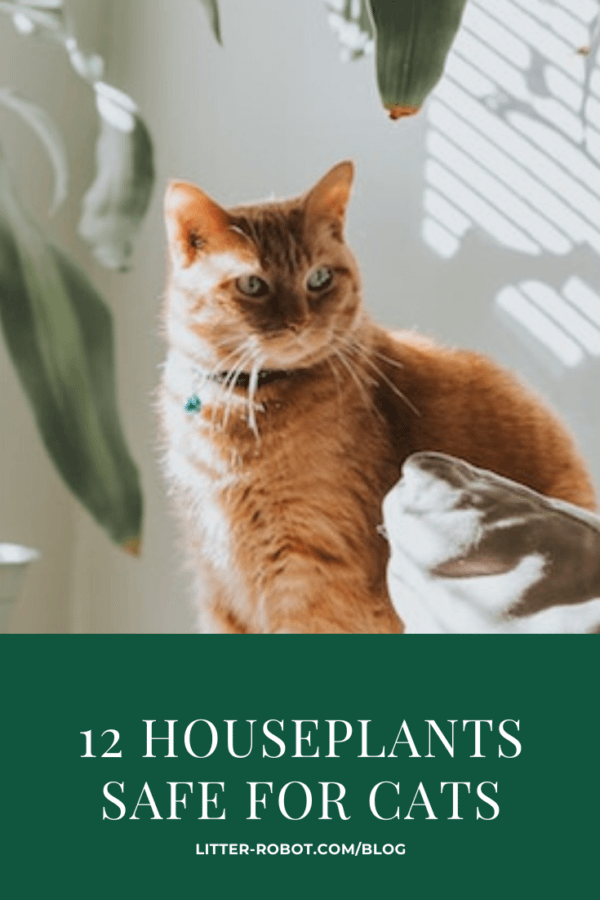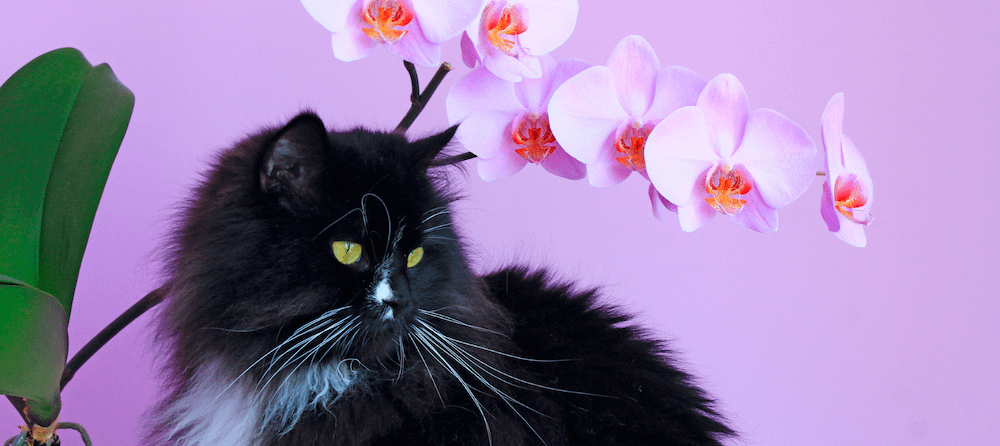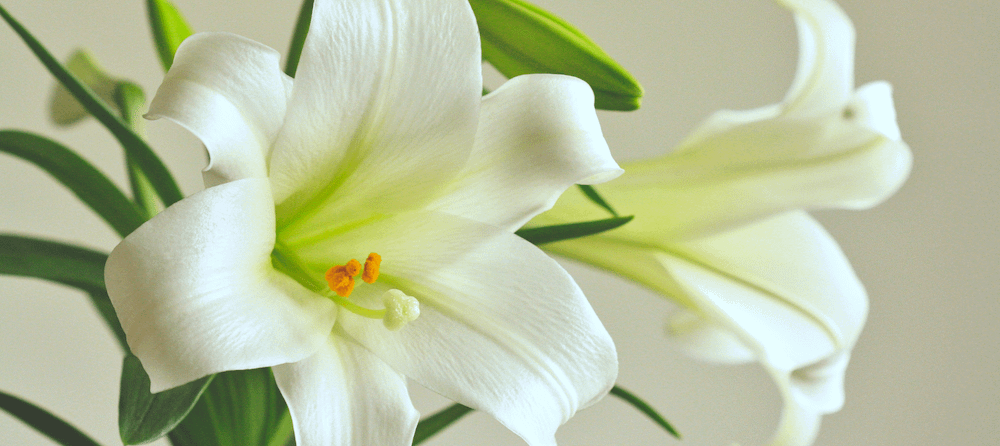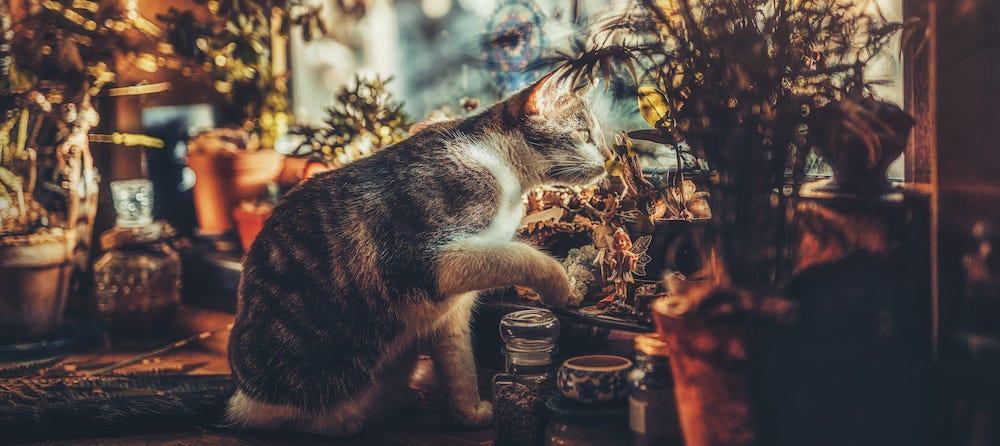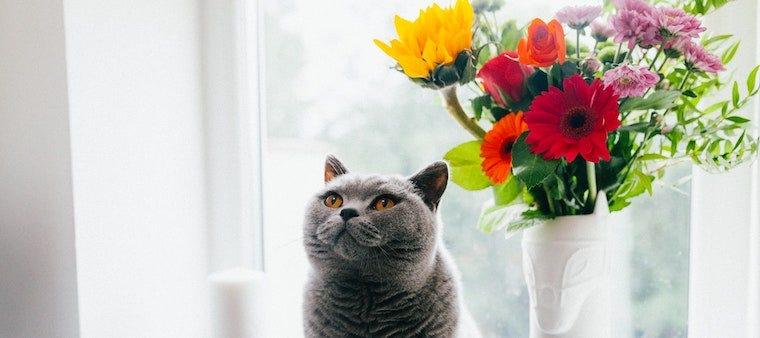One way to breathe new life into the grey abyss of winter is to fill your home with greenery. However, adding plants to a household with curious cats can make for a potentially dangerous situation. Breathe easy with this list of 12 houseplants safe for cats.
A note of caution from Laria Herod, DVM
While these plants are indeed safe and a tiny nibble here and there should be harmless, ingesting plant material can cause an upset stomach even if it’s not poisonous. It is best to discourage plant nibbling or place the flowers in areas where it is less likely to be an issue.
Also, be aware that cats may try to use flower pots as a litter box if given the opportunity, so placement is everything. Furthermore, be sure to be informed about the gardening aids you use: Just because the plants are nontoxic to your feline family member doesn’t change that fact something like the wrong fertilizer could be a source of trouble. Now get growing!
African Violets
Additional common names: Cape Marigold | Scientific name: Saintpaulia spp. | Family: Gesneriaceae
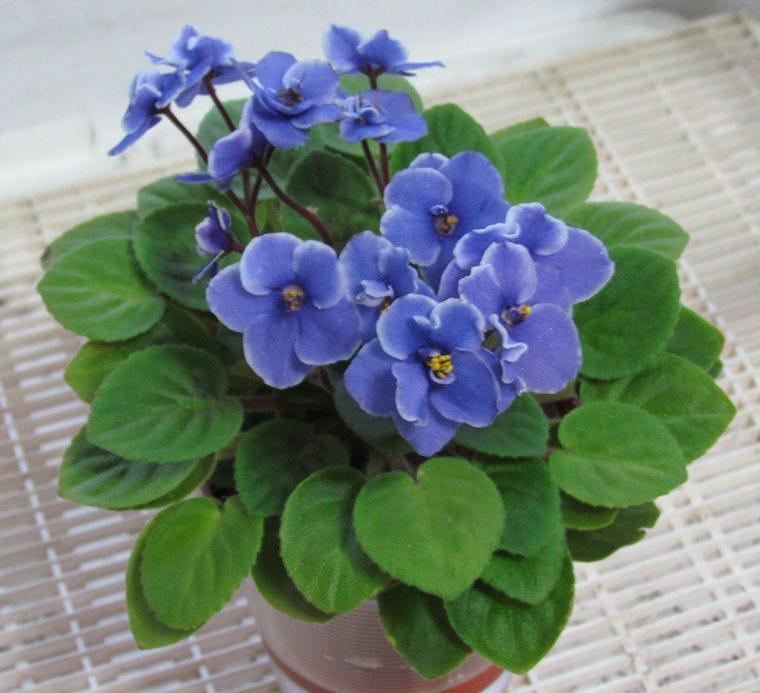
While many flowering plants are actually poisonous to cats, African violets are safe for both cats and dogs. These charming violets thrive in moderate to bright, indirect light, but can also bloom in low light. They do best in moderate temperatures and average humidity.
Areca Palm
Additional common names: Golden Butterfly Palm, Cane Palm, Golden Feather Palm, Yellow Palm | Scientific name: Dypsis lutescens | Family: Palmae
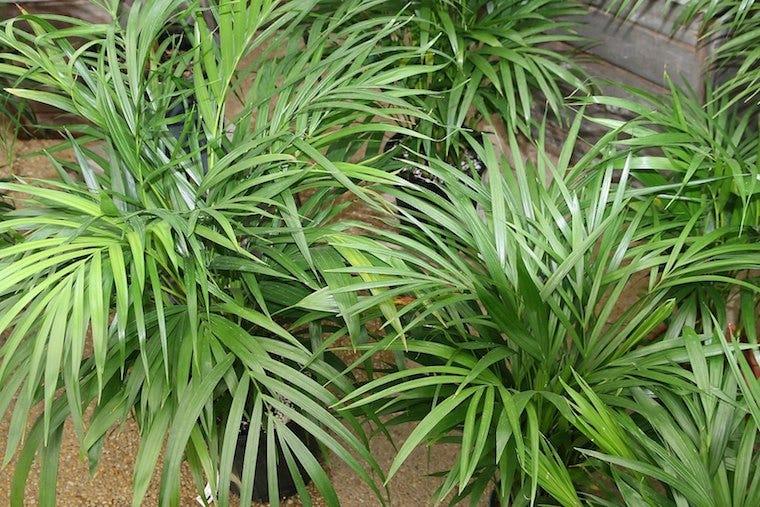
Also known as a butterfly palm, the bold areca palm does best in bright, indirect light. One tip? You may want to place your butterfly palm in a tall, heavy pot to keep your cat from digging in it or, ahem, using it as a litter box.
Baby Tears
Additional common names: Polka Dot Plant, Measles Plant, Flamingo Plant, Freckle Face, Pink Splash | Scientific name: Hypoestes phyllostachya | Family: Acanthaceae
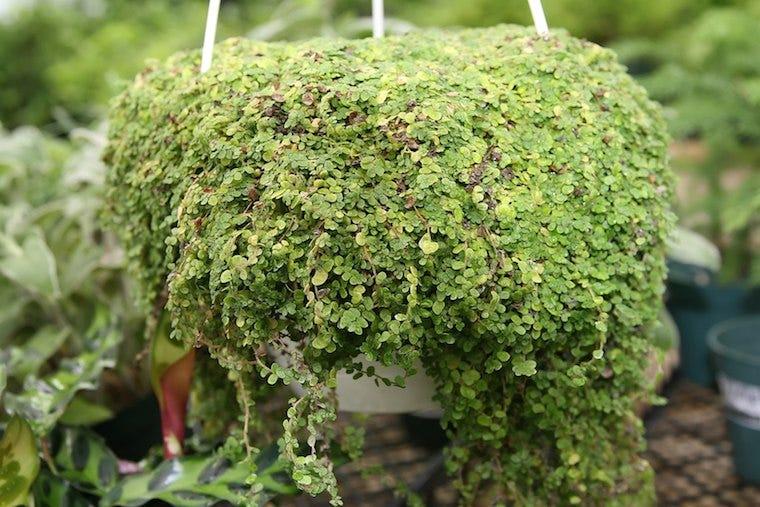
Another of the houseplants safe for cats on our list could also be considered a succulent safe for cats. This plant is a gorgeous choice for those who want low-maintenance plants that thrive in warm weather with filtered light—as long as you keep the soil moist. Hardy baby tears can also be used to cover soil of other houseplants in which your pets might be fond of digging.
Boston Fern
Scientific name: Nephrolepis exalta bostoniensis | Family: Dryopteridaceae
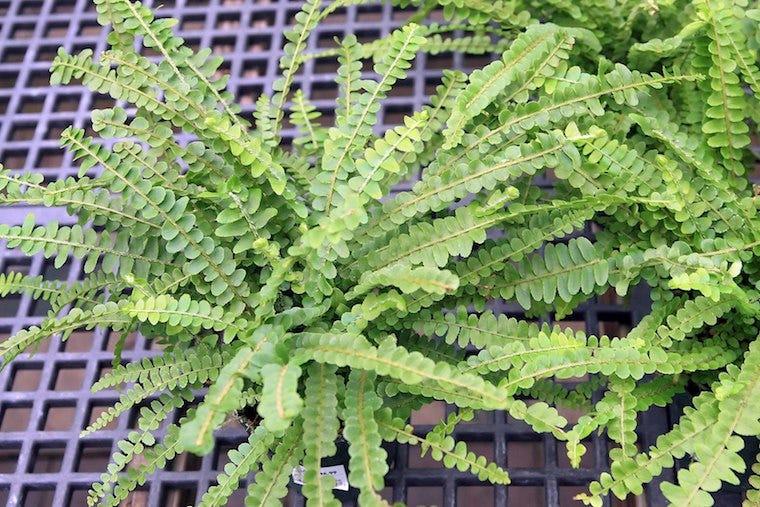
Not only is the Boston fern one of the few ferns safe for cats, it also does well as a hanging plant that you can (probably) keep out of your pet’s reach. These ferns need lots of bright, indirect light and a healthy dose of humidity.
Calathea
Additional common names: Maranta, Prayer Plant, Rattle Snake Plant, Peacock Plant, Zebra Plant | Scientific name: Calathea spp. | Family: Marantaceae
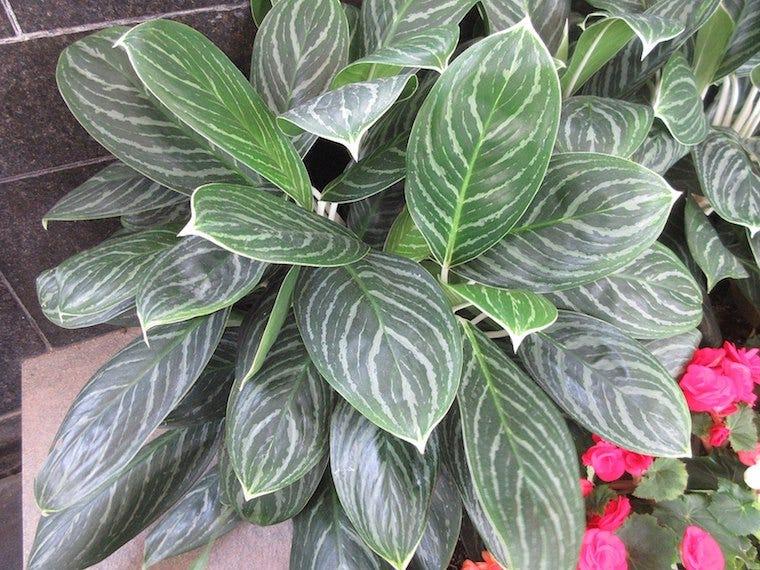
The calathea goes by many names. The prayer plant is called such because its leaves remain flat during the day, then fold up like hands praying at night. These potted plants are famous for their wide, green, decorative leaves.
Cast Iron Plant
Additional common names: Bar Room Plant, Iron Plant, Variegated Cast Iron Plant | Scientific names: Aspidistra elatior | Family: Liliaceae

This plant is as hard to kill as its name implies, making it a great option for beginner plant parents. Its leaves are large, glossy, and dark green. This plant doesn’t typically flower indoors, so be sure to keep it away from harsh direct sunlight.
Haworthia
Additional common names: Zebra Cactus | Scientific name: Haworthia species | Family: Liliaceae
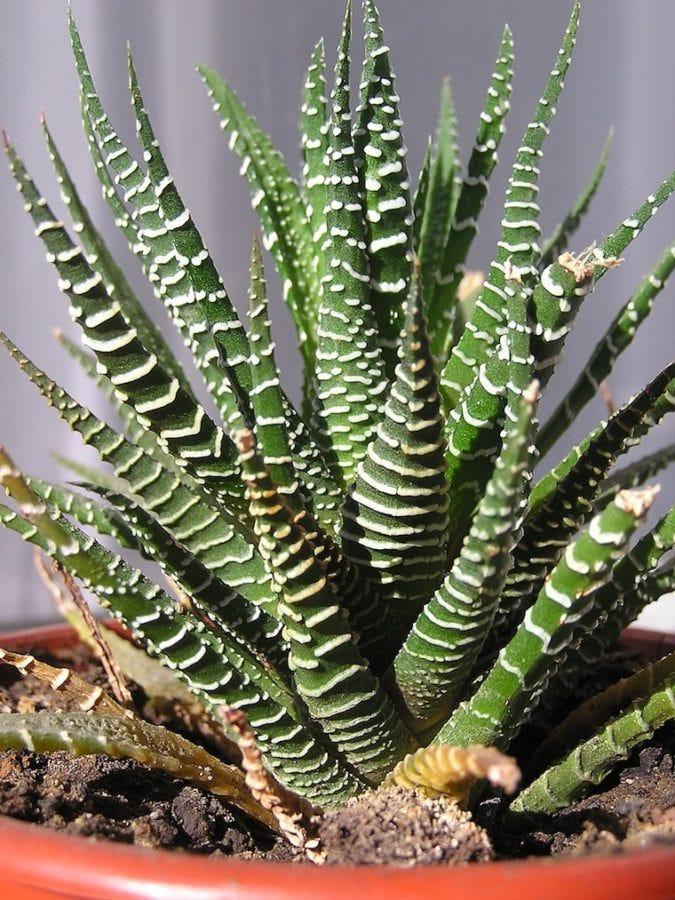
Another succulent on our list is the haworthia, also called the zebra plant. It looks like a miniature aloe vera plant—but unlike aloe vera, haworthia is safe for cats and dogs. You’ll know it by its fleshy leaves and pearly white bands.
Mosaic Plant
Additional common names: Jewel Plant, Silver Nerve, Nerve Plant, Silver Threads | Scientific name: Bertolonia mosaica | Family: Melastomataceae

The mosaic plant, also known as the nerve plant, certainly bears its name with its delicate pink- or white-veined leaves. This plant does best in low light with moderate watering.
Orchids
Family: Orchidaceae
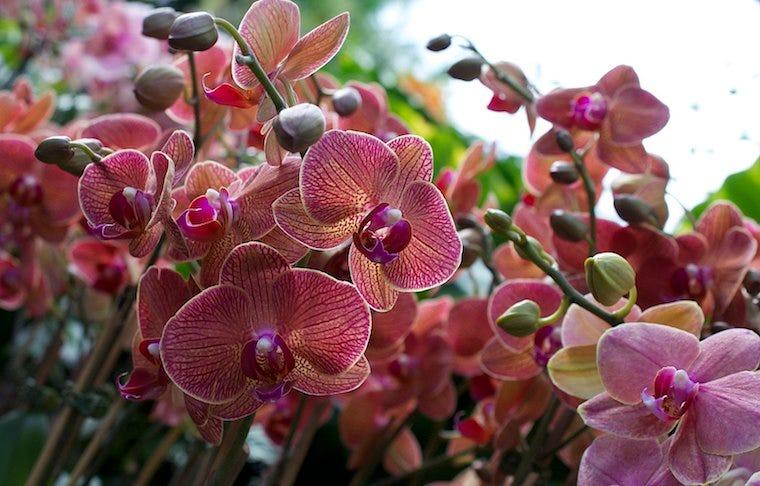
Orchids are as beautiful as lilies, without being deadly to cats. In fact, orchids are a perfectly safe houseplant for cats. Their colorful and fragrant flowers come in endless varieties because there are so many different species. Orchids often bloom long into winter when daylight is low. They’re a beautiful household-safe option.
Ponytail Palm
Additional common names: Elephant-Foot Tree, Pony Tail Plant, Bottle Palm | Scientific name: Beaucarnea recurvata | Family: Agavaceae
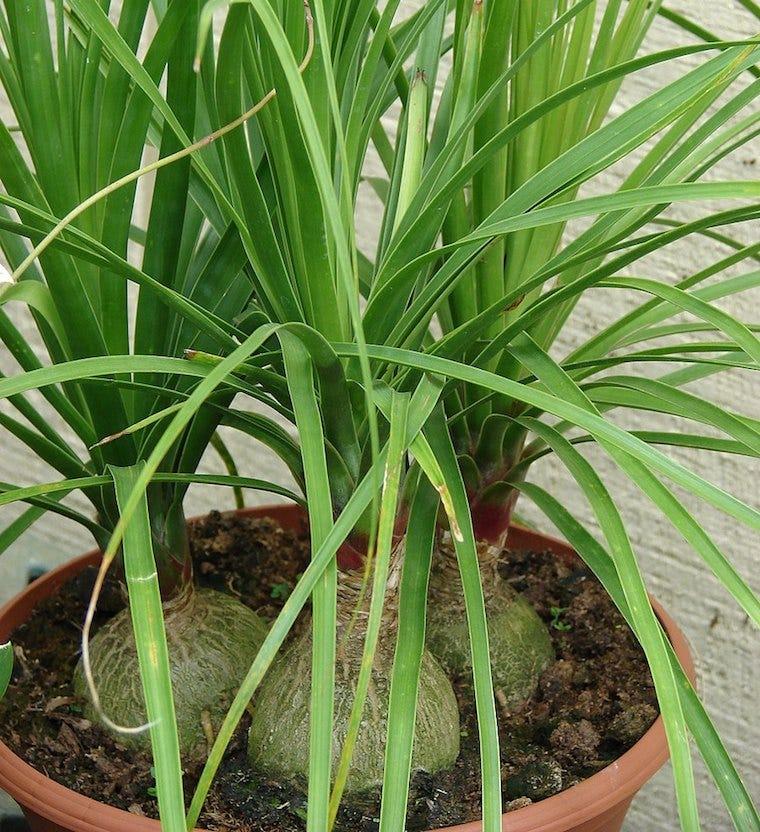
Another palm on our list of houseplants safe for cats is the aptly named ponytail palm. This plant does well in bright light and dry environments. The ponytail palm is actually part of the agave family—fitting, as it hails from Mexico.
Spider Plant
Additional common names: Ribbon Plant, Anthericum, Spider Ivy | Scientific name: Chlorophytum comosum | Family: Liliaceae

The easygoing spider plant is adaptable to almost any household. Your cat will enjoy batting at its thin foliage, although you can just as easily turn this into a hanging plant if you’d rather your furry family member leave it be.
Swedish Ivy
Additional common names: Creeping Charlie | Scientific name: Plectranthus australis | Family: Pilea: Uriticaeae; Plectranthus: Lamiaceae
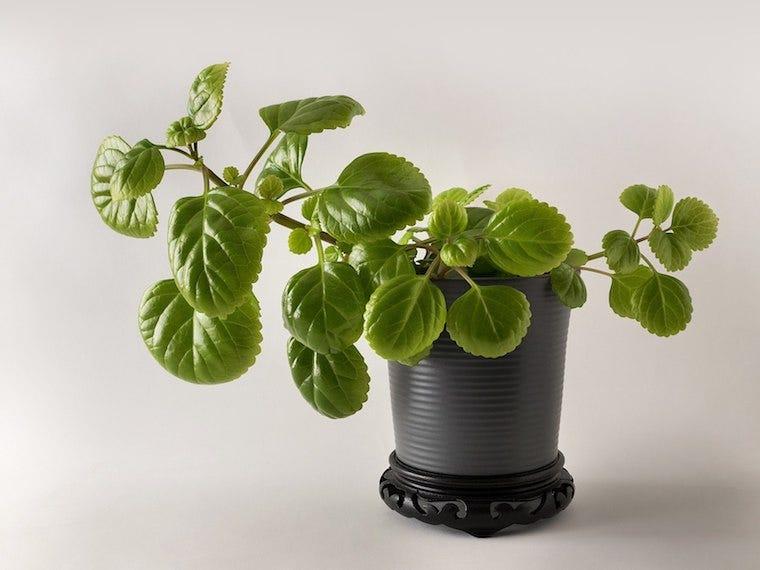
This popular hanging basket houseplant is a great option for beginners and can easily become a potted plant. As the final choice of our houseplants safe for cats, Swedish ivy does best in bright, indirect light.
Plants to grow for your cat's consumption
Since many cats enjoy nibbling on houseplants, it’s comforting to know you can provide greenery that is safe for them to ingest. A word of caution, though: many cats have delicate digestive systems, which are easily upset by too much of any plant. If you’re looking for plants that are safe for your cat, select from the following:
- Catnip: This plant is safe for your cat as long as it's not ingested in large quantities. Some cats like catnip, and some love it! It tends to provide a mild euphoria, followed by relaxation.
- Cat thyme or silver vine: Less well known than catnip, these plants have similar effects and will often produce results in cats who don’t typically respond to catnip.
- Valerian: This herb has been used for generations in people for its relaxing effects, but it has quite a different effect on cats. Valerian can be a great stimulant, particularly for overweight cats who don’t get enough activity.
- Oat, wheat, and barley grasses: Super quick and easy to grow, these tender greens can help settle your cat’s stomach and can help with alleviating problems associated with hairballs.
- Bean sprouts: Another quick-sprouting option for your feline are bean sprouts. These delicate little morsels are safe, and some cats adore them.
Reminder: Some houseplants can be deadly for cats

Lilies
The immensely popular lilies are poisonous to cats, and we will again and again reiterate this fact. Avoid lily plants that belong to the Lilium genus (which includes Easter lilies, tiger lilies, and Asiatic lilies) and the Hemerocallis genus (which includes daylilies).
Other houseplants to avoid if you have cats:
- Foxglove
- Philodendron
- Azalea and Rhododendron
- Cyclamen
- Oleander
- Sago Palm
- Castor Bean
- Yew
- Amaryllis
- Chrysanthemum
- English Ivy
- Pothos
- Tulips and Narcissus/Daffodils/Jonquils
- Marijuana (rarely results in death)
This is an extremely shortened list of plants that fall into their respective categories. Visit ASPCA’s list of plants that are toxic and non-toxic to cats to learn more.
Sources:
- ASPCA.org
- The Spruce
- Cast iron plant: © Nino Barbieri / CC-BY-SA-3.0
